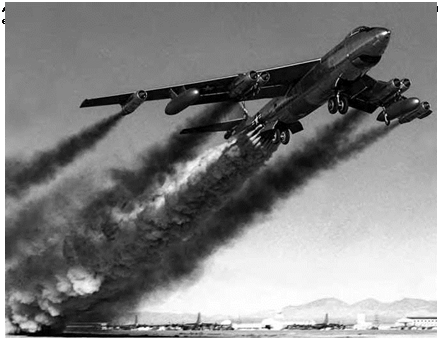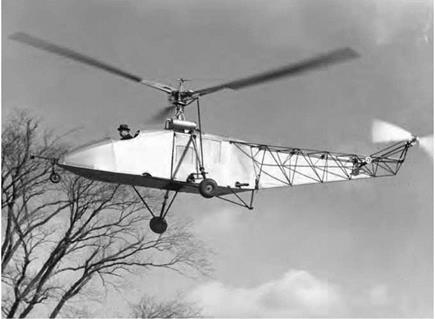Turbine blades operate at speeds well below hypersonic, but this topic shares the same exotic metals that are used for flight structures at the highest speeds. It is necessary to consider how such blades use coatings to stay cool, an issue that represents another form of cooling. It also is necessary to consider directionally solidified and single-crystal castings for blades.
Britain’s firm of Rolls-Royce has traditionally possessed a strong standing in this field, and The Economist has noted its activity:
The best place to start is the surprisingly small, almost underwhelming, turbine blades that make up the heart of the giant engines slung beneath the wings of the world’s biggest planes. These are not the huge fan blades you see when boarding, but are buried deep in the engines. Each turbine blade can fit in the hand like an oversized steak knife. At first glance it may not seem much more difficult to make. Yet they cost about $ 10,000 each. Rolls-Royce’s executives like to point out that their big engines, of almost six tonnes, are worth their weight in silver— and that the average car is worth its weight in hamburger.[1084]
Turbine blades are difficult to make because they have to survive high temperatures and huge stresses. The air inside big jet engines reaches about 2,900 °F in places, 750 degrees hotter than the melting point of the metal from which the turbine blades are made. Each blade is grown from a single crystal of alloy for strength and then coated with tough ceramics. A network of tiny air holes then creates a thin blanket of cool air that stops it from melting.
The study of turbine blades brings in the topic of thermal barrier coatings (TBC). By attaching an adherent layer of a material of low thermal conductivity to the surface of an internally cooled turbine blade, a temperature drop is induced across the thickness of the layer. This results in a drop in the temperature of the metal blade. Using this approach, temperature reductions of up to 340 °F at the metal surface have been estimated for 150-micron-thick yttria stabilized zirconia coatings. The rest of the temperature decrease is obtained by cooling the blade using air from the compressor that is ducted downstream to the turbine.
The cited temperature reductions reduce the oxidation rate of the bond coat applied to the blades and so delay failure by oxidation. They also retard the onset of thermal fatigue. One should note that such coatings are currently used only to extend the life of components. They are not used to increase the operating temperature of the engine.
Modern TBCs are required to not only limit heat transfer through the coating but to also protect engine components from oxidation and hot corrosion. No single coating composition appears able to satisfy these requirements. As a result, a "coating system” has evolved. Research in the last 20 years has led to a preferred coating system consisting of four separate layers to achieve long-term effectiveness in the high-temperature, oxidative, and corrosive environment in which the blades must function. At the bottom is the substrate, a nickel – or cobalt-based superalloy that is cooled from the inside using compressor air. Overlaying it is the bond coat, an oxidation-resistant layer with thickness of 75-150 microns that is typically of a NiCrAlY or NiCoCrAlY alloy. It essentially dictates the spallation failure of the blade. Though it resists oxidation, it does not avoid it; oxidation of this coating forms a third layer, the thermally grown oxide, with a thickness of 1 to 10 microns. It forms as Al2O3. The topmost layer, the ceramic topcoat, provides thermal insulation. It is typically of yttria-stabilized ZrO2. Its thickness is characteristically about 300 microns when deposited by air plasma spray and 125 microns when deposited by electron beam physical vapor deposition (EB-PVD).[1085]
Yttria-stabilized zirconia has become the preferred TBC layer material for use in jet engines because of its low thermal conductivity and its relatively high thermal expansion coefficient, compared with many other ceramics. This reduces the thermal expansion mismatch with the metals of high thermal expansion coefficient to which it is applied. It also has good erosion resistance, which is important because of the entrainment of particles having high velocity in the engine gases. Robert Miller, a leading specialist, notes that NASA and the NACA, its predecessor, have played a leading role in TBC development since 1942. Flame-sprayed Rokide coatings, which extended the life of the X-15 main engine combustion chamber, represented an early success. Magnesia-stabilized zirconia later found use aboard the SR-71, allowing continuous use of the afterburner and sustained flight above Mach 3. By 1970, plasma-sprayed TBCs were in use in commercial combustors.[1086]
These applications involved components that had no moving parts. For turbines, the mid-1970s brought the first "modern” thermal spray coating. It used yttria as a zirconia stabilizer and a bond coat that contained MCrAlY, and demonstrated that blade TBCs were feasible.
C. W. Goward of Pratt & Whitney (P&W), writing of TBC experience with the firm’s J7 5 engine, noted: "Although the engine was run at relatively low pressures, the gas turbine engine community was sufficiently impressed to prompt an explosive increase in development funds and programs to attempt to achieve practical utilization of the coatings on turbine airfoils.”[1087]
But tests in 1977 on the more advanced JT9D, also conducted at P&W, brought more mixed results. The early TBC remained intact on lower-temperature regions of the blade but spalled at high temperatures. This meant that further development was required. Stefan Stecura reported an optimum concentration of Y2O3 in ZrO2 of 6-8 percent. This is still the state of the art. H. G. Scott reported that the optimum phase of zirconia was t’-ZrO2. In 1987, Stecura showed that ytterbia – stabilized zirconia on a ytterbium-containing bond coat doubled the blade life and took it from 300 1-hour cycles to 600 cycles. Also at that time, P&W used a zirconia-yttria TBC to address a problem with endurance of vane platforms. A metallic platform, with no thermal barrier, showed burn-through and cracking from thermal-mechanical fatigue after 1,500 test cycles. Use of a TBC extended the service life to 18,000 hours or 2,778 test cycles and left platforms that were clean, uncracked, and unburned. P&W shared these results with NASA, which led to the TBC task in the Hot Section Technology (HOST) program. NASA collaborated with P&W and four other firms as it set out to predict TBC lifetimes. A preliminary NASA model showed good agreement between experiment and calculation. P&W identified major degradation modes and gave data that also showed good correlation between measured and modeled lives. Other important contributions came from Garrett Turbine Co. and General Electric. The late 1980s brought Prescribed Velocity Distribution (PVD) blades that showed failure when they were nearly out of the manufacturer’s box. EV-PVD blades resolved this issue and first entered service in 1989 on South African Airways 747s. They flew from Johannesburg, a high-altitude airport with high mean temperatures where an airliner needed a heavy fuel load to reach London. EV-PVD TBCs remain the coating of choice for first-row blades, which see the hottest combustion gases. TBC research continues to this day, both at NASA and its contractors. Fundamental studies in aeronautics are important, with emphasis on erosion of turbine components. This work has been oriented toward rotorcraft and has brought the first EV-PVD coating for their blades. There also has been an emphasis on damping of vibration amplitudes. A new effort has dealt with environmental barrier coatings (EBCs), which Miller describes as "ceramic coatings, such as SiC, on top of ceramics.”[1088]
Important collaborations have included work on coatings for diesels, where thick TBCs permit higher operating temperatures that yield increased fuel economy and cleaner exhaust. This work has proceeded with Caterpillar Tractor Co. and the Army Research Laboratory.[1089]
Studies of supersonic engines have involved cooperation with P&W and GE, an industrial interaction that Miller described as "a useful reality check.”[1090] NASA has also pursued the Ultra Efficient Engine Technology program. Miller stated that it has not yet introduced engines for routine service but has led to experimental versions. This work has involved EBCs, as well as a search for low thermal conductivity. The latter can increase engine-operating temperatures and reduce cooling requirements, thereby achieving higher engine efficiency and lower emissions. At NASA Glenn, Miller and Dong-ming Zhu have built a test facility that uses a 3-kilowatt CO2 laser with wavelength of 10.6 microns. They also have complemented conventional ZrO2- Y2O3 coatings with other rare-earth oxides, including Nd2O3-Yb2O3 and Gd2O3-Yb2O3.[1091]
Can this be reduced further? A promising approach involves development of new deposition techniques that give better control of TBC pore morphology. Air plasma spray deposition creates many intersplat pores between initially molten droplets, in what Miller described as "a messy stack of pancakes.” By contrast, TBC layers produced by EB-PVD have a columnar microstructure with elongated intercolumnar pores that align perpendicular to the plane of the coating. Alternate deposition methods include sputtering, chemical vapor deposition (CVD), and sol-gel approaches. But these approaches involve low deposition rates that are unsuitable for economic production of coated blades. CVD and sol-gel techniques also require the use of dangerous and costly precursor materials. In addition, none of these approaches permit the precise control and manipulation of pore morphology. Thus, improved deposition methods that control this morphology do not now exist.
![]() Today, this approach in modern CFD is called "upwinding” and is part of many modern algorithms in use for all kinds of flows. In 1971, this idea was groundbreaking, and it allowed Murman and Cole to obtain the first successful numerical solutions of the transonic flow over a body. In addition to the restriction of thin airfoils at small angles of attack, however, their use of the small perturbation velocity potential equation also limited their solutions to isentropic flows. This meant that, although their solution captured the semblance of a shock wave in the flow, the location and flow changes across a shock wave were not accurate. Because many transonic flows involve shock waves embedded in the flow, this was definitely a bit of a problem. The solution to this problem involved the numerical treatment of the Euler equations, which, as we have discussed early in this article, accurately pertain to any inviscid flow, not just one with small perturbations and free of shocks.
Today, this approach in modern CFD is called "upwinding” and is part of many modern algorithms in use for all kinds of flows. In 1971, this idea was groundbreaking, and it allowed Murman and Cole to obtain the first successful numerical solutions of the transonic flow over a body. In addition to the restriction of thin airfoils at small angles of attack, however, their use of the small perturbation velocity potential equation also limited their solutions to isentropic flows. This meant that, although their solution captured the semblance of a shock wave in the flow, the location and flow changes across a shock wave were not accurate. Because many transonic flows involve shock waves embedded in the flow, this was definitely a bit of a problem. The solution to this problem involved the numerical treatment of the Euler equations, which, as we have discussed early in this article, accurately pertain to any inviscid flow, not just one with small perturbations and free of shocks.











